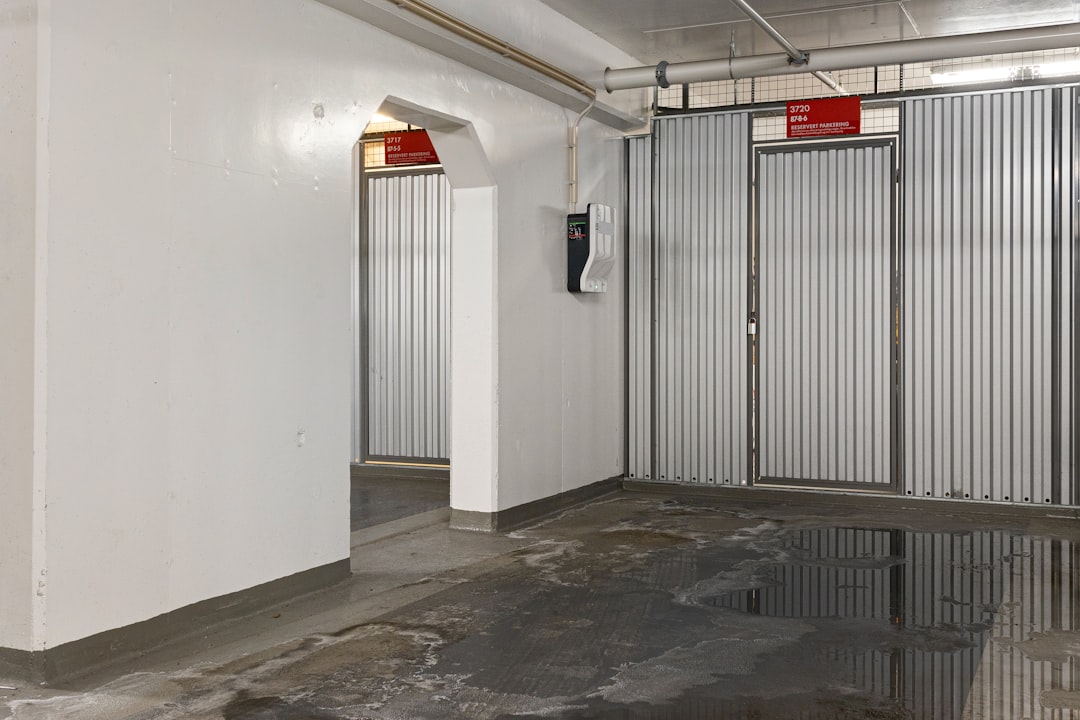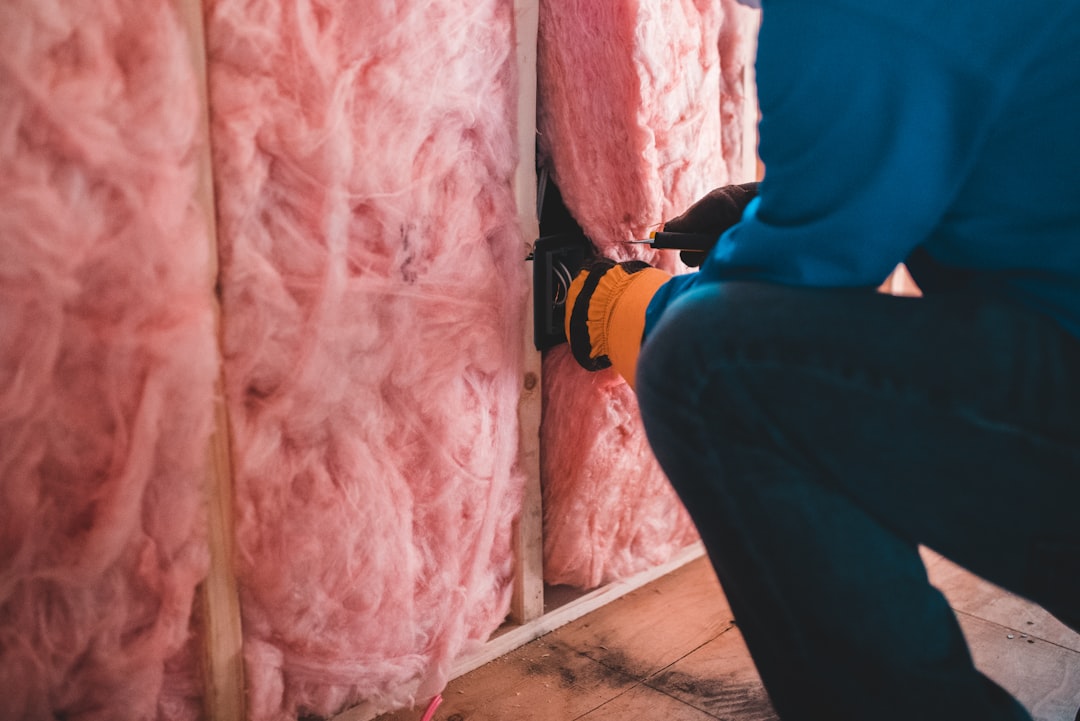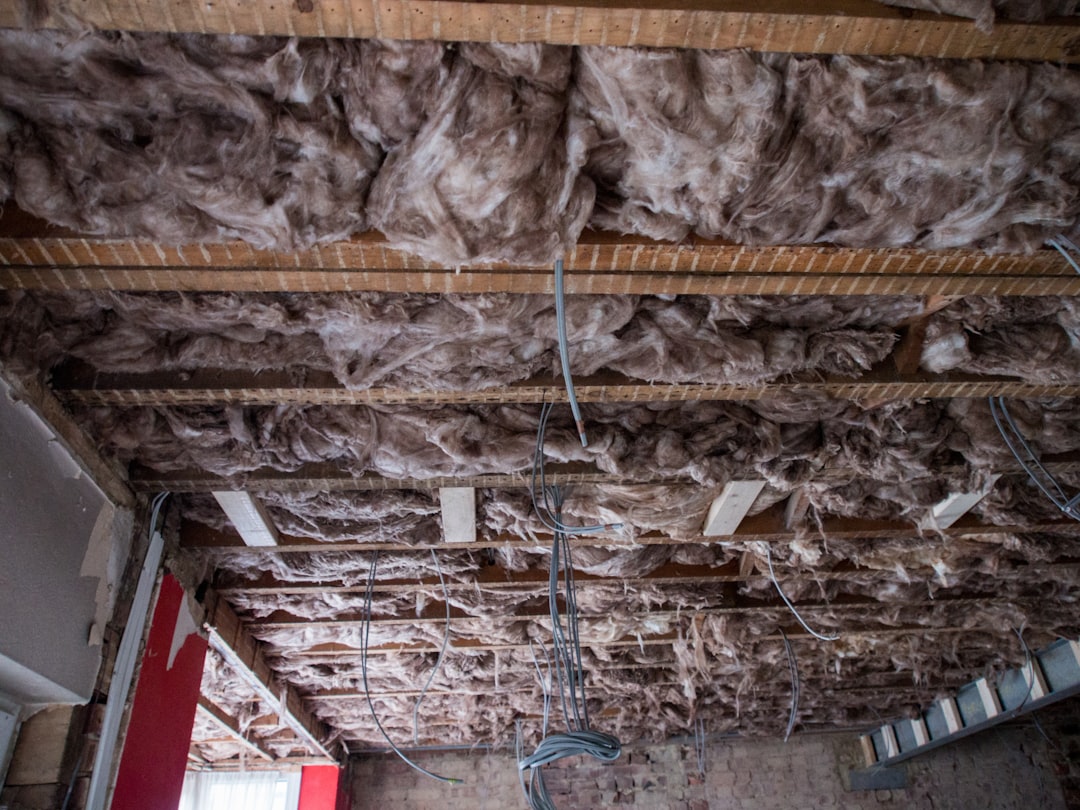

Engage prospects with a scan and streamline customer engagement with FREE QR code marketing tools by Sona – no strings attached!
Create a Free QR CodeFree consultation

No commitment

Engage prospects with a scan and streamline customer engagement with FREE QR code marketing tools by Sona – no strings attached!
Create a Free QR CodeFree consultation

No commitment

Lead generation in the home improvement industry refers to attracting, educating, and converting people who are actively considering upgrades to their homes into sales-ready opportunities. For blown-in insulation services, this often includes homeowners seeking energy efficiency, property managers exploring utility savings across portfolios, and builders aiming to meet code and performance standards. The process typically spans multiple touchpoints: discovery through ads or recommendations, research on benefits and rebates, request for assessment or quote, and scheduling of on-site evaluations. In today’s market, digital-first journeys dominate; even when interest starts offline through a yard sign or door hanger, prospects expect a fast path to online information and action.
This is where qr codes complement your broader lead generation strategy. Field crews, canvassers, and operations teams already distribute print materials and interact in person. A QR code gives those moments a direct digital endpoint: get an instant quote, book an energy audit, review attic access requirements before the appointment, or submit photos for a pre-estimate. When paired with well-structured Google Ads campaigns, QR codes help you capture intent wherever it emerges and route it to trackable, high-converting experiences. The result is a more complete funnel that blends offline engagement with online precision so every scan or click becomes a measurable step toward revenue.

Google Ads matters because it connects you to high-intent searchers at the exact moment they are ready to act. Homeowners rarely wake up and randomly upgrade their insulation. They feel discomfort, receive a high energy bill, or see a rebate promotion, then search for solutions like blown-in insulation near me or how to lower attic temperature. When your brand appears at the top of those searches, you intercept demand that is already formed. That is the highest quality lead you can buy: a person with a problem and a timeline. With search ads, Local Services Ads, and performance-based bidding, you can turn those moments into booked inspections and closed jobs.
The platform’s location, device, and schedule controls are particularly valuable in insulation because seasonality and geography shape demand. You can concentrate spend in colder months or heat waves, expand bids for neighborhoods with older housing stock, and increase visibility during evenings when homeowners research. Google Ads’ measurement stack tells you which keywords, locations, and creatives convert, so you keep spending on what works and drop what does not. QR codes then extend this precision to your offline footprint. A scan on a jobsite sign or a brochure can feed into the same analytics and retargeting engine, giving you a single view of performance across online and offline touchpoints.


A strong lead generation engine for blown-in insulation services blends search demand capture with offline activation and measurement. The following blueprint uses Google Ads for acquisition and QR codes to eliminate friction in the field, so every brochure, yard sign, or estimate becomes a digital onramp. Whether you service a single metro or operate across multiple territories, align your structure, creative, and tracking to the realities of your crews and your customers.
At the core, you will define goals, map intent to keywords, design conversion-focused landing pages, and implement end-to-end attribution. QR codes deepen the data you collect since each scan carries context such as location, placement, and time. With a platform like Sona QR, you can build, manage, and track codes centrally, then sync scan events to your CRM and ad platforms for smarter bidding and retargeting.
Start with clarity on what success looks like. For most insulation contractors, the primary conversion is a booked attic assessment or a quote request. Secondary conversions include calls, savings calculator usage, and download of a rebate guide. Define acceptable cost per lead and target conversion rates by channel. Segment audiences into homeowners, property managers, and builders, since each group values different outcomes: comfort and bills for homeowners, portfolio efficiency for managers, compliance and schedules for builders.
Translate goals into campaign structures. For example, create separate campaigns for attic insulation and wall dense-pack so budgets and bids match intent and margin. Build geo-segments where you are most competitive or have open crew capacity. Document seasonal goals, such as ramping spend in late summer ahead of winter.
Use Google’s Keyword Planner and your search term reports to assemble a list that mirrors real intent. Group terms into themes like cost and pricing, problems and symptoms, rebate and financing, and service near me. Add brand terms and competitor terms if needed. Balance head terms with long-tail phrases like how much insulation in attic should I have or blown-in insulation r value chart to capture early-stage researchers who can be nurtured into appointments.
Build a negative keyword list to protect budgets. Exclude DIY, unrelated materials, job postings, and academic searches. Monitor search term reports weekly in peak season to refine. If you deploy QR codes on print assets, use matching UTM parameters so your analytics can compare the performance of search clicks to scans for similar intents and queries.
Design mobile-first pages that answer the key questions quickly. Use a clear headline such as Cut Energy Bills With High-Performance Blown-In Insulation and follow with a benefits section, a two to three step booking form, trust badges, financing information, and rebate guidance. Add a dynamic phone number with call tracking, and place the booking form above the fold and at the end of the page. Use short, conversational copy and supportive visuals like infrared heat maps and before and after images.
For QR traffic, build dedicated variants of these pages. A jobsite sign can route to a near-instant booking flow that auto-detects the neighborhood. A door hanger can route to a pre-qualification page that asks for house age, square footage, and attic type with sliders. With Sona QR, set up dynamic codes so you can update destinations without reprinting and tag each code by placement such as truck decal, invoice footer, or realtor referral card. Append UTMs like utm_source=qr_truck and utm_campaign=fall_winter_promo to maintain clean attribution.
Strong ad copy speaks to pains and outcomes. Use headlines like Stop Overpaying for Heat, Install Blown-In Insulation and Get a Warmer, Quieter Home. Include social proof such as 4.9-star rating or 2,000 homes insulated locally. Add urgency with seasonal promotions or limited rebate windows. Offer a free attic assessment, same-week scheduling, or a guaranteed minimum R-value upgrade.
Structure your ads with assets. Use sitelinks for services, rebates, financing, and testimonials. Add callouts for Lifetime Warranty Options or Licensed and Insured. Use structured snippets for Services such as Cellulose, Fiberglass, Removal. Pair copy with consistent content on landing pages to improve Quality Score and reduce CPCs.
Install Google Tag Manager and set up conversion events for form submissions, phone calls, and bookings. Use dynamic number insertion to attribute calls to specific campaigns. Configure offline conversion imports if your CRM tracks estimates and closed jobs so you can optimize bids toward actual revenue. Layer in Sona QR to capture scan data such as time, device, and location, then pass scan events with UTMs into Google Analytics and your CRM.
Create audiences for retargeting and lookalikes: visitors who used the calculator, visitors who started the booking form, and QR scanners from door hangers. Sync these segments to Google Ads, Meta, and email tools. Use Sona’s identity resolution and multi-touch attribution on Sona.com to connect QR scans to website activity, ads, and revenue for full-funnel insights.
Allocate budget by campaign and territory based on season, crew capacity, and historical performance. In peak months, fund high-intent search heavily while maintaining a steady retargeting layer. Choose bidding strategies that match your data maturity. Start with Maximize Conversions with a cap, then move to Target CPA or Target ROAS once you have consistent conversion data. For Local Services Ads, set a weekly budget and adjust per lead cap by zip code competitiveness.
Target by ZIP or radius to keep crews efficient. Use location exclusions to avoid low-yield areas. Apply ad schedules so you bid higher during evenings and weekends when research spikes, but keep a small presence during off hours with a call answering service or chat to capture overnight interest.
Turn on all applicable assets: call, lead form, location, price, and promotion assets. These increase SERP real estate and improve CTR. For blown-in insulation, a lead form with pre-populated fields like address and phone can perform well on mobile, but always test against a landing page for higher intent. Enroll in Local Services Ads, complete verification, and collect reviews. LSAs often produce high-quality calls, especially when paired with a visible review count and Google Guaranteed.
Map every physical touchpoint to a QR experience. Use codes on door hangers after an audit attempt, on yard signs during active jobs, on truck decals, in direct mailers around target neighborhoods, at home shows, and in builder packets. Each code should have a clear CTA such as Scan to Book Free Attic Assessment or Scan for Rebate Guide. With Sona QR, generate unique codes for each placement, style them with your brand, and test scan performance across devices and distances to ensure reliability.
Ensure field teams promote scanning. Train canvassers to point out the code, explain the benefit, and handhold the first scan if needed. Use dynamic codes so you can change destinations by season, for example routing to an insulation financing page in summer and a winter comfort campaign in fall. Sync scan data back to your CRM so your sales team knows which door hanger or sign sparked the inquiry.
Adopt a testing cadence. A/B test headlines that focus on comfort versus savings, try different hero images, and vary promotions. Test landing page layouts and shorten forms to reduce friction. Use Google Ads experiments for bidding strategies, location bid adjustments, and device modifiers. For QR, test placements and CTAs: see if Scan for Infrared Heat Map drives more scans than Scan for Instant Quote in different neighborhoods.
Scale what works. Expand keyword coverage where CPA is below target, clone top campaigns into adjacent zip codes, and roll out high-performing QR placements to more crews. Keep an eye on attribution. If Sona QR shows that door hanger scans turn into more kept appointments than jobsite signs, reweight your print investment accordingly.

Success in a competitive market depends on disciplined account hygiene, consistent testing, and a connected offline-to-online journey. Start with the fundamentals: build tightly themed ad groups to match messages to intent, maintain comprehensive negative lists to guard budget, and update creative with seasonal and rebate-driven offers. Then overlay advanced optimizations like audience layering and first-party data from QR scans so your campaigns get smarter over time. In blown-in insulation, where education and trust matter, your ads and landing pages should make benefits tangible with proof such as infrared imagery, testimonials, and simple calculators.
Pair PPC with QR codes to maximize conversion rates. A prospective customer may click an ad at work and then later notice your truck in their neighborhood. If that truck has a QR code that routes to a booking page with an evening timeslot, you capture that second moment of intent. If your QR data flows into the same analytics and CRM systems as your ad clicks, your bidding models and retargeting become more precise. The combination of Google’s reach and QR’s immediacy creates a multi-entry funnel that meets the customer wherever they are: on a search results page, in their mailbox, or on the sidewalk outside their home.
Google Ads offers powerful tools for home improvement businesses to generate high-quality leads and grow efficiently. With targeted campaigns, optimized ad copy, and strong conversion tracking, you can boost your ROI and establish a strong presence in your local market. When you layer in QR codes across offline touchpoints, you lower friction, capture more intent, and create a feedback loop that makes both your ads and your operations smarter. Sona QR centralizes code creation, tracking, and integrations, while Sona.com connects those scans to the rest of your marketing and sales data. Together, they turn every search and every scan into a step toward a warmer, quieter, more energy-efficient home for your customers. Start creating QR codes for free.
QR codes have transformed blown-in insulation services from traditional marketing efforts into dynamic, measurable growth opportunities. Whether it’s streamlining customer access to detailed service information, simplifying appointment scheduling, or enhancing post-installation support, QR codes replace cumbersome processes with instant, mobile-friendly actions that capture real-time engagement data—turning every flyer, truck decal, or invoice into a powerful conversion tool. Imagine knowing exactly which materials lead homeowners to request quotes or schedule consultations, and being able to optimize your outreach on the fly.
With Sona QR, you can create dynamic, trackable QR codes in seconds, update campaigns instantly without reprinting, and connect every scan directly to meaningful business outcomes like increased bookings and customer retention. No wasted effort, no missed opportunities—just smarter, more profitable blown-in insulation service campaigns. Start for free with Sona QR today and turn every scan into a new customer relationship.
Blown-in insulation improves energy savings, enhances home comfort by reducing hot or cold spots, helps meet code compliance, speeds up project timelines, reduces noise, and may qualify for rebates.
Costs vary and can be researched through targeted Google Ads campaigns or by requesting quotes via QR codes that provide instant estimates and booking options.
You can find local blown-in insulation services by searching Google with keywords like 'blown-in insulation near me' or by scanning QR codes on print materials such as door hangers and yard signs that route to service providers.
Blown-in insulation is a loose-fill material that can be cellulose or fiberglass, applied by blowing it into attics or wall cavities, offering faster installation and better coverage compared to batt or spray foam insulation.
While the article does not specify exact lifespan, blown-in insulation typically provides long-term performance and energy efficiency benefits when properly installed.
It is installed by blowing loose-fill insulation material into attics or wall cavities using specialized equipment, often requiring professional assessment and installation for optimal results.
Blown-in insulation helps reduce energy consumption by improving home energy efficiency, which lowers utility bills and decreases environmental impact.
Yes, professional installation is recommended to ensure proper coverage, compliance with codes, and to maximize energy savings and comfort.
Blown-in insulation improves home energy efficiency by reducing heat loss or gain, resulting in lower utility bills and increased comfort.
Use Sona QR's trackable codes to improve customer acquisition and engagement today.
Create Your FREE Trackable QR Code in SecondsJoin results-focused teams combining Sona Platform automation with advanced Google Ads strategies to scale lead generation

Connect your existing CRM

Free Account Enrichment

No setup fees
No commitment required

Free consultation

Get a custom Google Ads roadmap for your business






Launch campaigns that generate qualified leads in 30 days or less.
